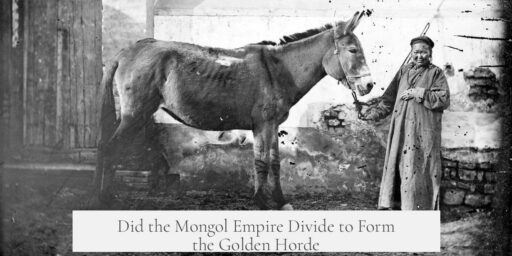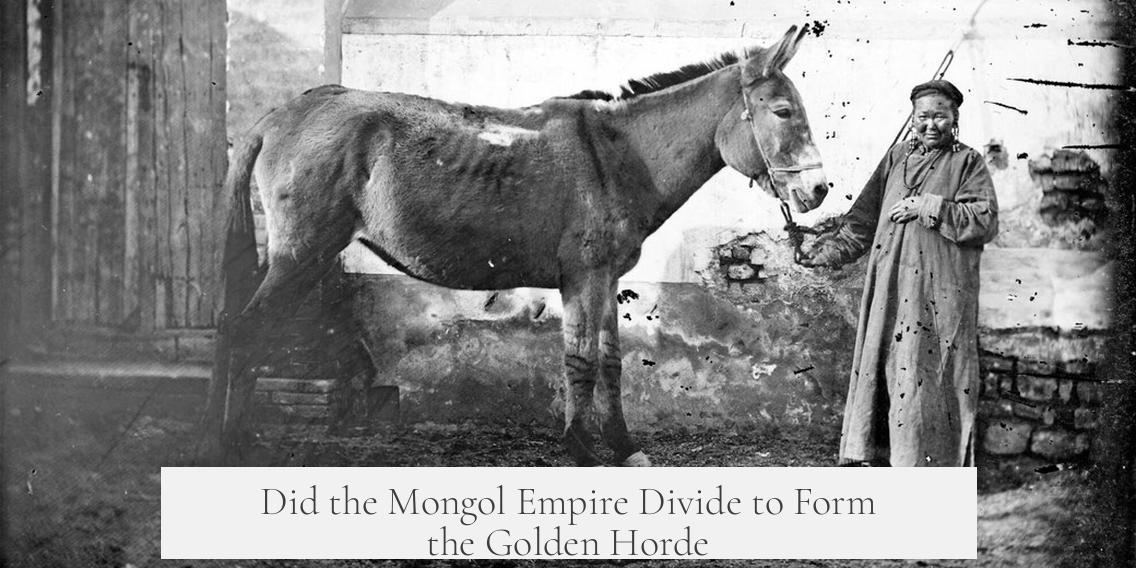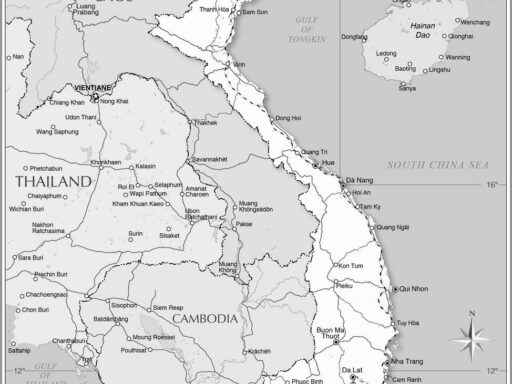The Mongol Empire did split into the Golden Horde as part of its systematic division after the death of Genghis Khan. The empire was divided among Genghis Khan’s four sons, with each son or his lineage receiving a territorial appanage, known as an ulus. The western-most division, governed by Batu Khan, son of Jochi (Genghis Khan’s eldest son), became known as the Golden Horde.
Genghis Khan’s death in 1227 triggered the formal partition of the vast empire he had built. The division was not an informal breakup but an organized allocation of lands and peoples. This method accorded with Mongol governance, whereby an ulus comprised both territory and the associated population. This approach allowed each son’s family line to rule a portion of the empire with relative autonomy yet maintaining ties to the broader imperial structure.
| Son of Genghis Khan | Ulus (Appanage) | Ruler by Inheritance | Region | Significance |
|---|---|---|---|---|
| Jochi | Golden Horde | Batu (grandson) | Western Steppe (Eastern Europe, parts of Russia) | Emerged as a powerful khanate, controlling vast western territories |
| Chaghadai | Chaghadai Khanate | Chaghadai and descendants | Central Asia | Weakened by conflicts, later absorbed by others |
| Ogedei | Ogedei Ulus / Ilkhanate | Mongkhe usurped successors; later Hulegu’s Ilkhanate | Western Asia, Persia | Appanage replaced by the Ilkhanate founded by Tolui line |
| Tolui | Toluid Ulus / Yuan Dynasty | Kublai Khan | Mongolia, Manchuria, China | Founded Yuan dynasty of China, representing easternmost domain |
Jochi, the eldest son of Genghis Khan, died before his father, leaving the responsibility of his ulus to his son Batu. Batu’s administration of this western hold transformed that territory into the Golden Horde. This khanate played a crucial role in the Mongol presence in Eastern Europe and Russia.
The Golden Horde’s territory included vast Eurasian steppe regions, extending into parts of modern Russia, Ukraine, and Kazakhstan. The khanate managed a diverse population through Mongol administrative frameworks. It lasted for several centuries, although it eventually fragmented due to internal strife and external pressures.
Other parts of the empire also went through significant changes. Tolui’s descendants maintained the core Mongolian homeland and expanded their influence by founding China’s Yuan dynasty under Kublai Khan. Ogedei’s ulus was disrupted by internal power struggles. Mongkhe, Tolui’s eldest son, took control over the Qaghan position, sidelining Ogedei’s successors. Ogedei’s realm was effectively replaced by the Ilkhanate, established by Hulegu, another Toluid brother, which controlled much of Persia and western Asia.
Chaghadai’s ulus faced weakening due to factional warfare and purges and was ultimately absorbed by Timur’s empire in the late 14th century. These developments reveal how the Mongol Empire’s division was more than a simple split; it was a complex fracturing enhanced by dynastic rivalries and external conquests.
In Mongol governance, an ulus was more than land. It was a social and administrative unit accompanying a ruling family. This system of appanages was fundamental for managing the sprawling empire, supporting each branch of Genghis Khan’s family. The Golden Horde fit into this system as a formal and recognized part of the empire’s territorial order.
Therefore, the Golden Horde did not just appear as an independent entity but originated directly from the structured division of the Mongol Empire. Its establishment was a consequence of designated inheritance norms following Genghis Khan’s passing.
- The Mongol Empire divided into appanages (uluses) for Genghis Khan’s sons after his death in 1227.
- Jochi’s ulus, governed by his son Batu, became the Golden Horde occupying western steppe lands.
- The Golden Horde was an official and integral part of the empire’s regional governance.
- Other lines formed separate states: Tolui’s Yuan dynasty in the east, Ogedei’s ulus replaced by the Ilkhanate, and Chaghadai’s ulus weakened and absorbed.
- This division was systematic, balancing family inheritance and regional control.
For a visual reference, maps of the Golden Horde and other Mongol appanages illustrate this systematic subdivision and geographic spread across Eurasia.
Did the Mongol Empire officially split into the Golden Horde?
Yes. After Genghis Khan died, the empire was divided among his sons. The western appanage given to Jochi’s son Batu became known as the Golden Horde.
What does “ulus” or “appanage” mean in the context of the Mongol Empire?
An ulus or appanage is a territory along with its people granted to a family branch. The Golden Horde was one such structured division under this system.
Who ruled the Golden Horde after the Mongol Empire split?
Batu, the son of Jochi (Genghis Khan’s eldest son), inherited the Golden Horde. It covered the western part of the Mongol-held lands.
Was the Golden Horde the only part the Mongol Empire split into?
No. The empire broke into multiple appanages: Tolui’s lineage became the Yuan dynasty in China, Ogodei’s ulus was replaced by the Ilkhanate, and Chaghadai’s ulus weakened over time.
Did internal conflicts affect the splits of the Mongol Empire including the Golden Horde?
Yes. Power struggles and purges among the descendants caused changes and weakened several appanages, but the Golden Horde remained a distinct entity in the west.




